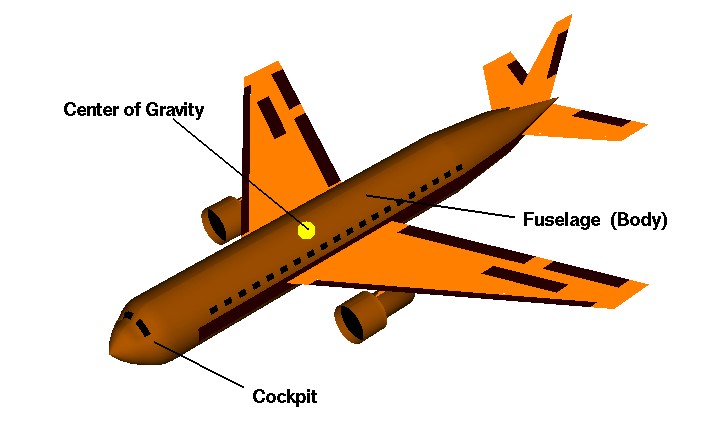Fuselage
Airplane
Airplanes are transportation devices which are designed to move people and cargo from one place to another. Airplanes come in many different shapes and sizes depending on the mission of the aircraft. The airplane shown on this slide is a turbine-powered airliner which has been chosen as a representative aircraft.
Fuselage
The fuselage, or body of the airplane, is a long hollow tube which holds all the pieces of an airplane together. The fuselage is hollow to reduce weight. As with most other parts of the airplane, the shape of the fuselage is normally determined by the mission of the aircraft. A supersonic fighter plane has a very slender, streamlined fuselage to reduce the drag associated with high speed flight. An airliner has a wider fuselage to carry the maximum number of passengers. On an airliner, the pilots sit in a cockpit at the front of the fuselage. Passengers and cargo are carried in the rear of the fuselage and the fuel is usually stored in the wings. For a fighter plane, the cockpit is normally on top of the fuselage, weapons are carried on the wings, and the engines and fuel are placed at the rear of the fuselage.
Weight
The weight of an aircraft is distributed all along the aircraft. The fuselage, along with the passengers and cargo, contribute a significant portion of the weight of an aircraft. The center of gravity of the aircraft is the average location of the weight and it is usually located inside the fuselage. In flight, the aircraft rotates around the center of gravity because of torques generated by the elevator, rudder, and ailerons. The fuselage must be designed with enough strength to withstand these torques.

